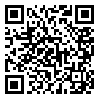BibTeX | RIS | EndNote | Medlars | ProCite | Reference Manager | RefWorks
Send citation to:
URL: http://refahj.uswr.ac.ir/article-1-1928-en.html
In general, present article investigate opportunity distribution in higher education among students in four public universities. Coaching Problem: In present societies, nearly the only way for membership in new middle class and finding its own job, is attaining university degree. Moreover, necessary condition for attaining most of high level job and accepting specialized responsibilities in management and business, is taking university degree. Taking university degree on the one hand adds probability of finding better job, better earning and more lessure times, and, on the other hand, reduce the possibility of dismissal. And also, higher education is the most essencial for social promotion and mobility low class children in the society. Because of it, access to higher education is regarded one of important factor to improve social equity. Therefore, the main problem of this article is to investigate students social origin in some universities monitored by Ministry of Science, Research ans Technology (MSRT).In other words, its goal, is answering to this question that wether there is any equity for teaching opportunity in Iranian public higher education (in investigating universities). Method: Present article is based o n a field study that investigates variables of the projects by using descriptive and inferencial statistics. In this project, sampling unit was a student and sample society includes all day students in universities of Tehran, sharif Technology, Shahid Beheshti and Allame Tabatabaee, fhat out of them 511 students were randomly selected and considered characteristics. Face validity of questionnaires were confirmed by relevant experts moreover, Chronbachs Alpha technique was used to assess reliabity of questionaires. For determining Socio-Economic Status (S-E-S), six variables were used: occupation level of father’s job, occupation level of mother’ job, father income, mother income, educational degree of father and educational degree of educational degree of mother. Findings: Project findings showed that in our sample, Socio-Economic Status(SES) are as following,5 percent of students have high level SES,20 percent of them have middle toward up SES,28 percent have middle toward down SES, and 48 percent have low level SES. This findings shows that most of student are belong to low level and middle toward down S ES. Results: The main hypothesis of this project (i.e. “The students with higher SES likely enter more in public universities”) finally was not recognized. Although observational hypothesis was not confirmed, there are some symptoms that makes worried about such a hypothesis be fulfield. At present time, Iranian higher education system has not any effective policy to add access for social low groups to higher education. But, soon or late, necessity of compiling such a program will be appeared, and, for now, we must also be ready to design it.
Received: 2015/08/27 | Accepted: 2015/08/27 | Published: 2015/08/27
| Rights and permissions | |
 |
This work is licensed under a Creative Commons Attribution-NonCommercial 4.0 International License. |





